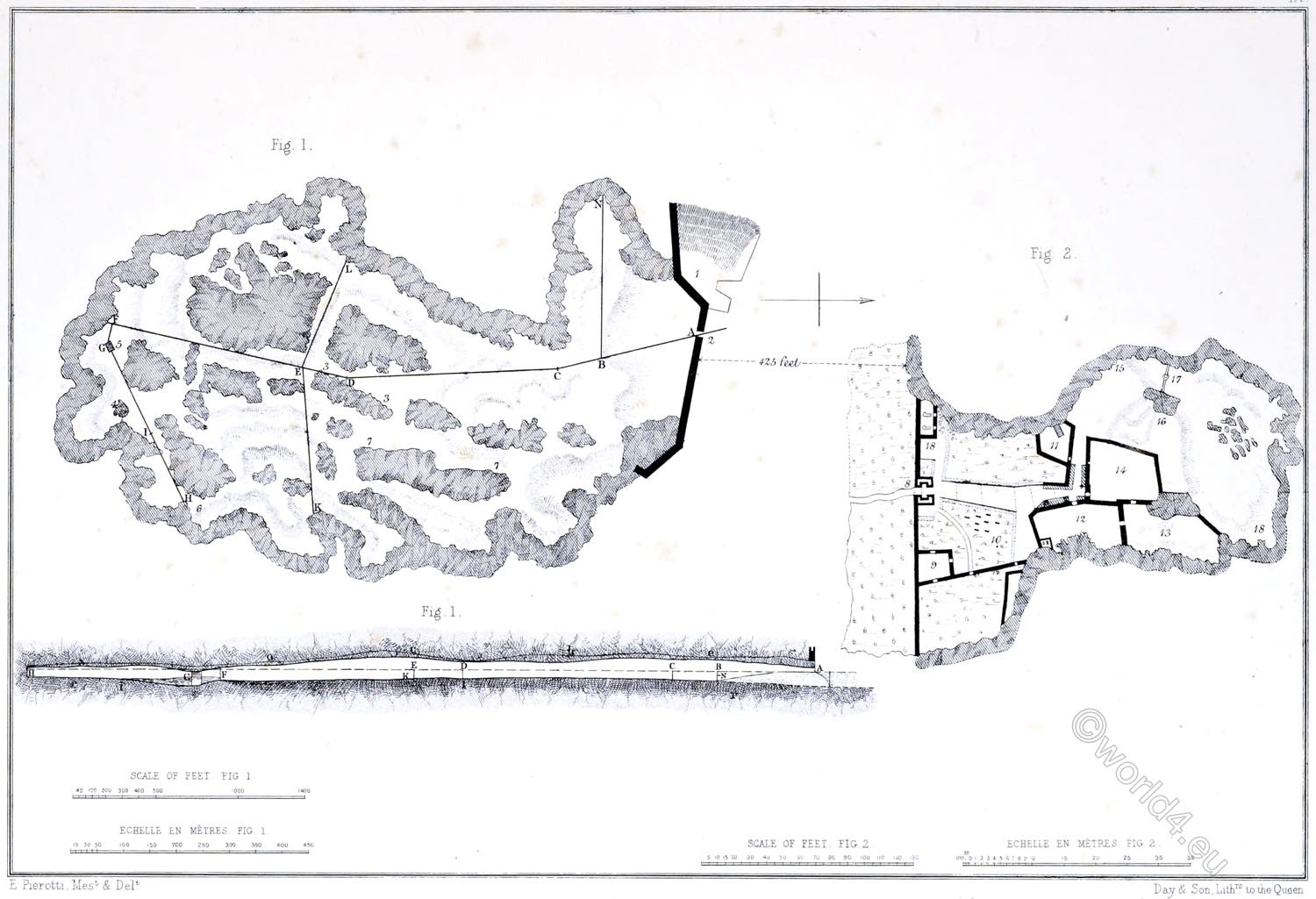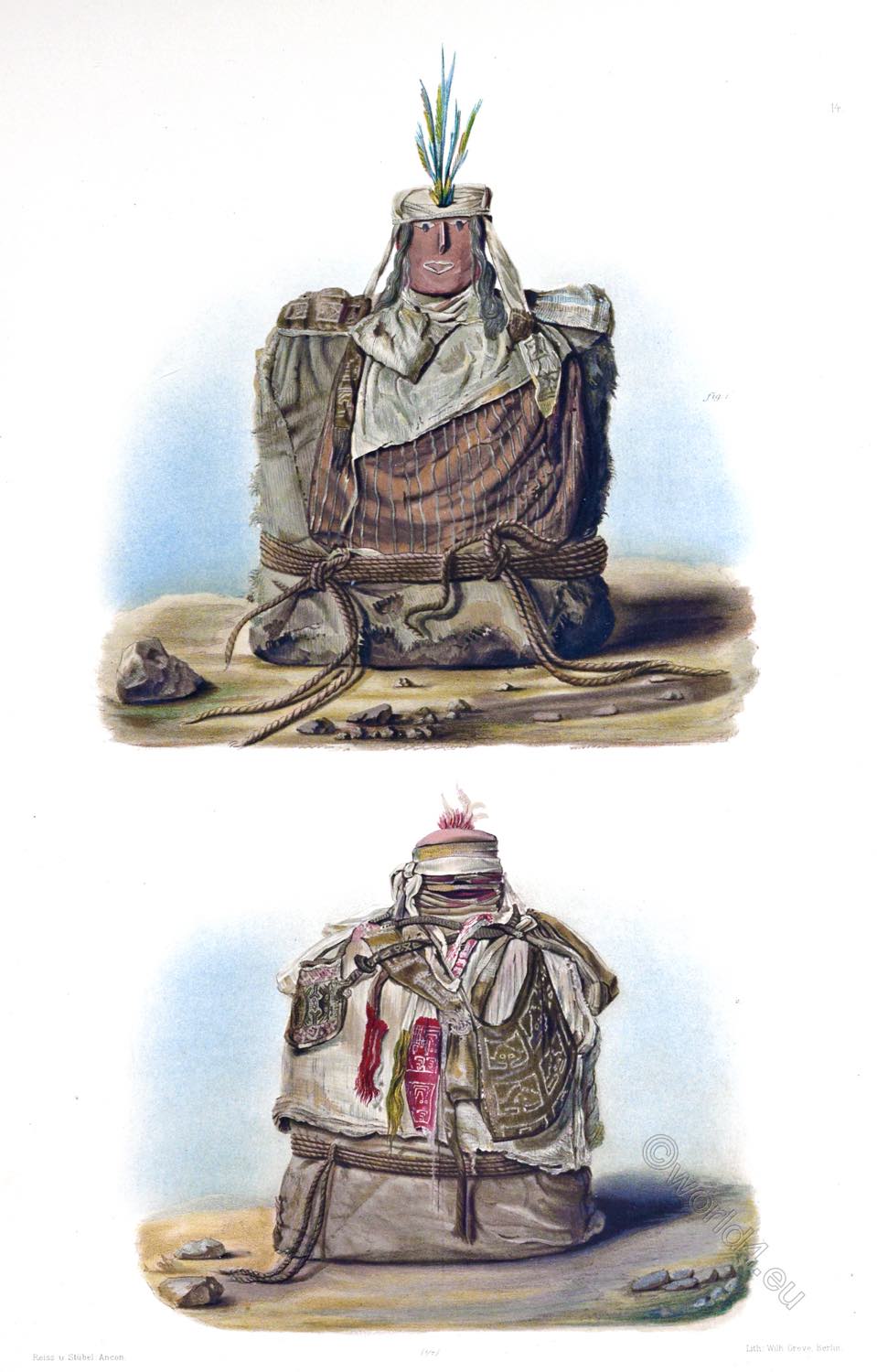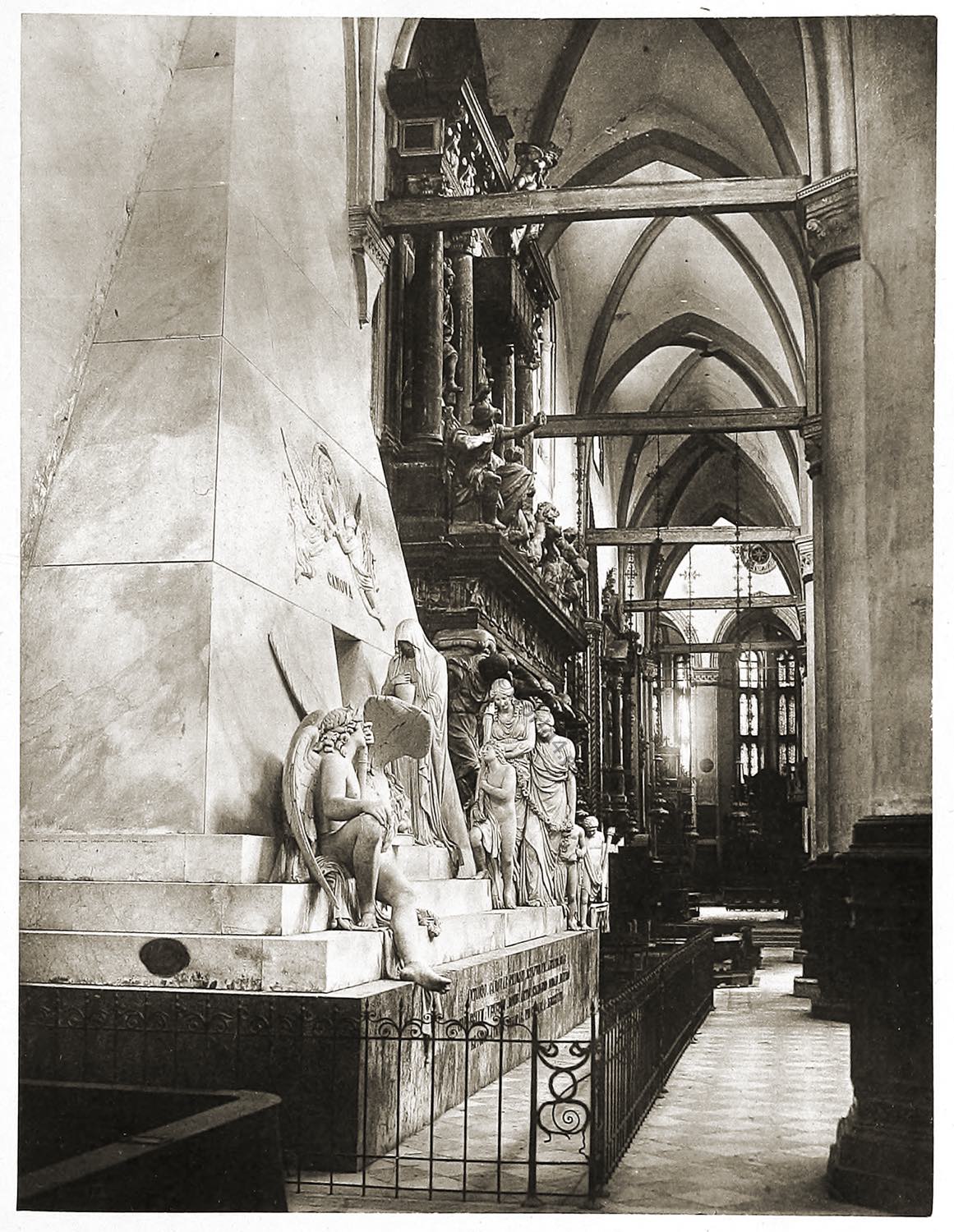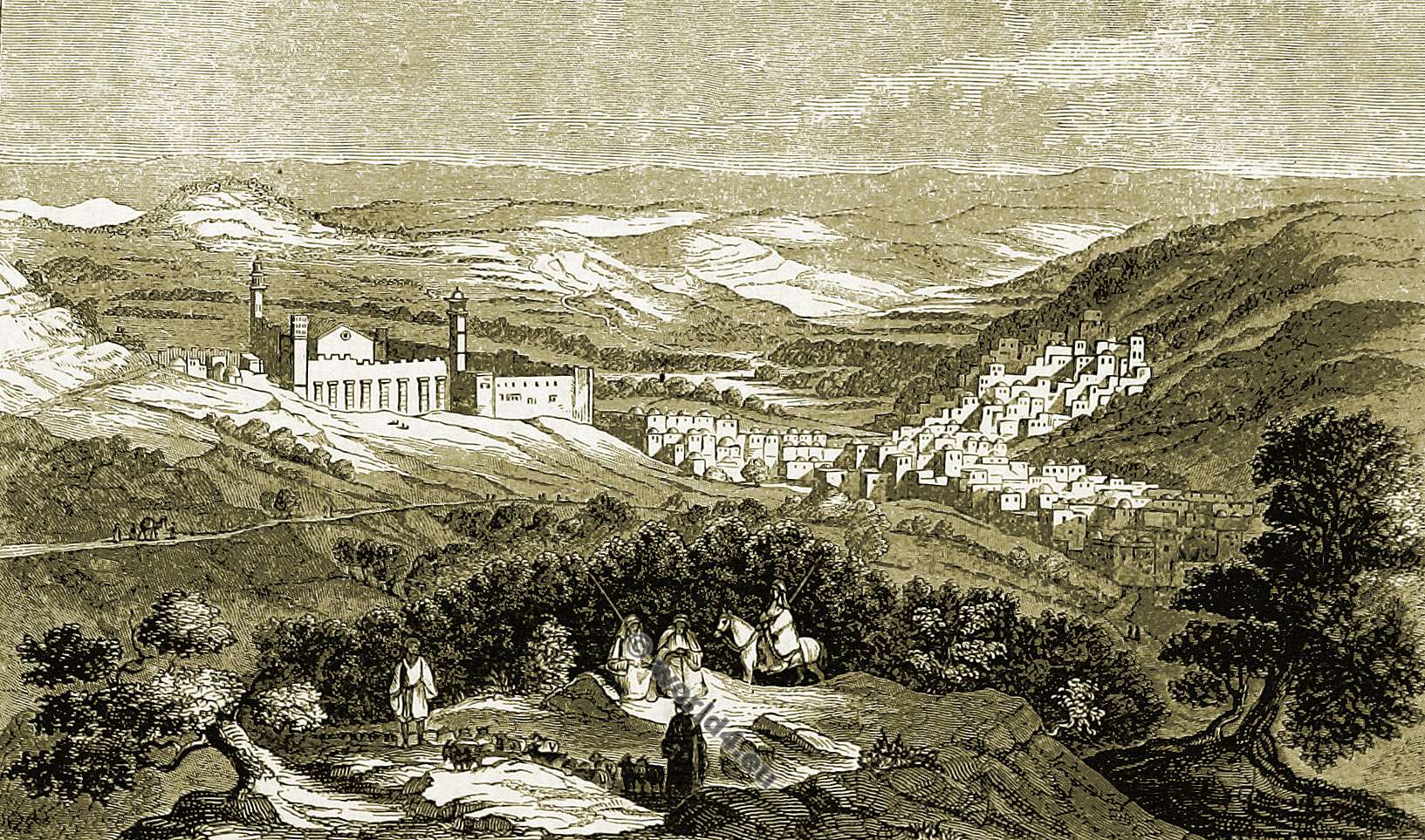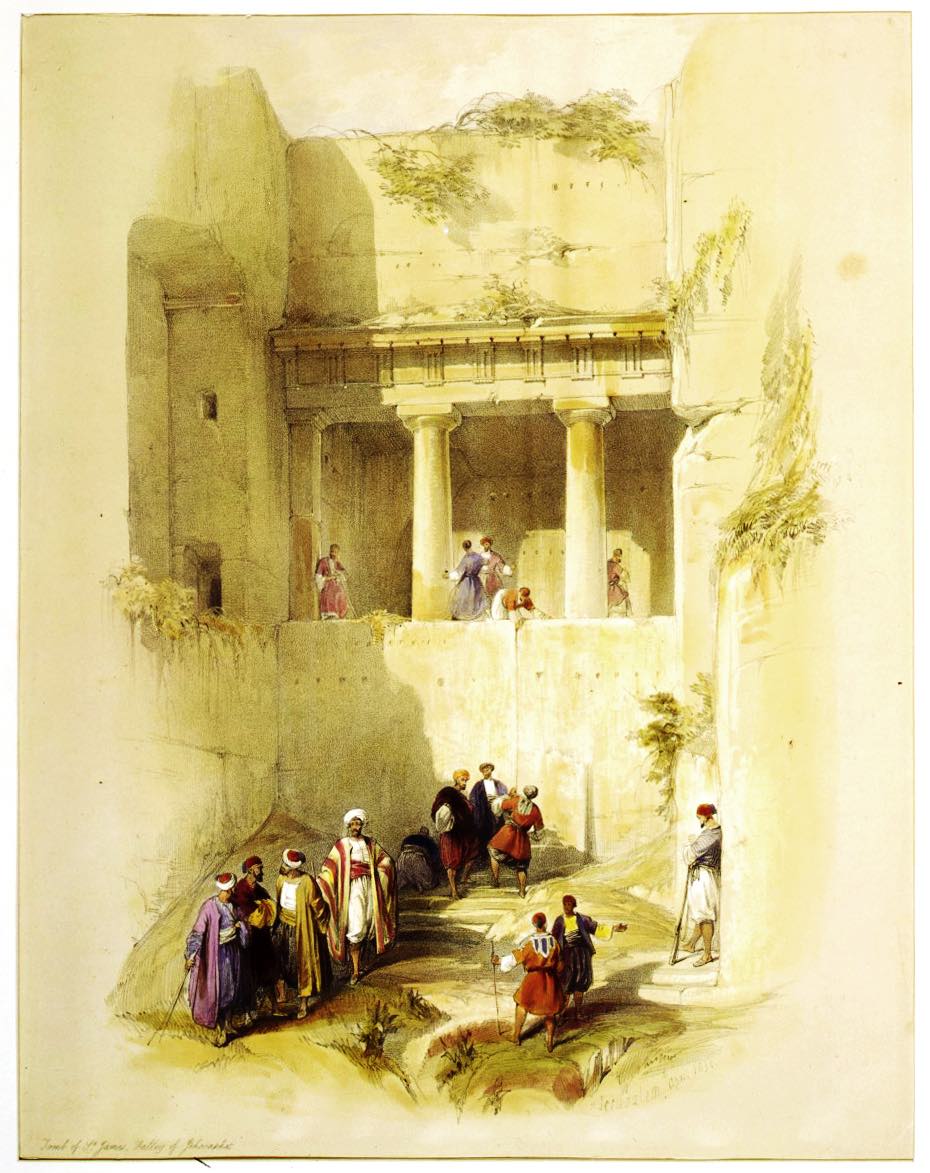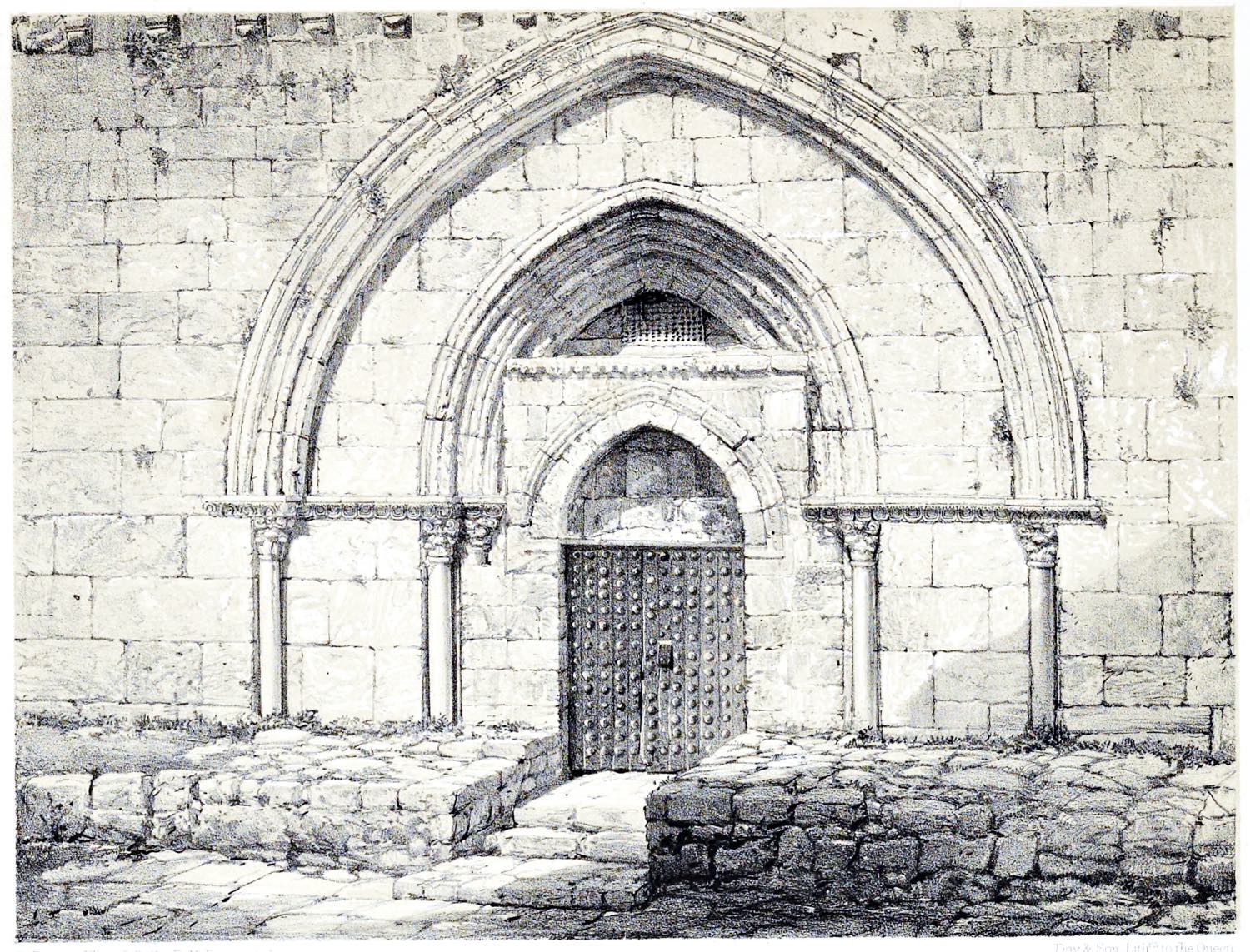
PLATE L.
FRONT OF THE TOMB OF THE VIRGIN MARY.
Principal Entrance of the time of the Crusaders.
The tomb of Mary in the Kidron Valley near Jerusalem is considered by early church tradition to be the burial place of Mary, the mother of Jesus. The tomb is located at the foot of the Mount of Olives, close to the Church of All Nations.
A small church was built there in the 4th century. Crusaders restored and expanded it in the 12th century before it was destroyed by Saladin after the conquest of Jerusalem. The crypt was spared in the process and has been preserved until today, as Mary is also venerated in Islam.
The present church belongs to the Greek Orthodox and Armenian Apostolic Churches; the Syrian Orthodox, Coptic Orthodox and Ethiopian Orthodox Churches may also use it. A steep staircase behind the façade leads down to the tomb, where Mary is said to have lain for a few days until her ascension. In addition, the graves of her parents S. Joachim and S. Anna and her husband Joseph are shown there.
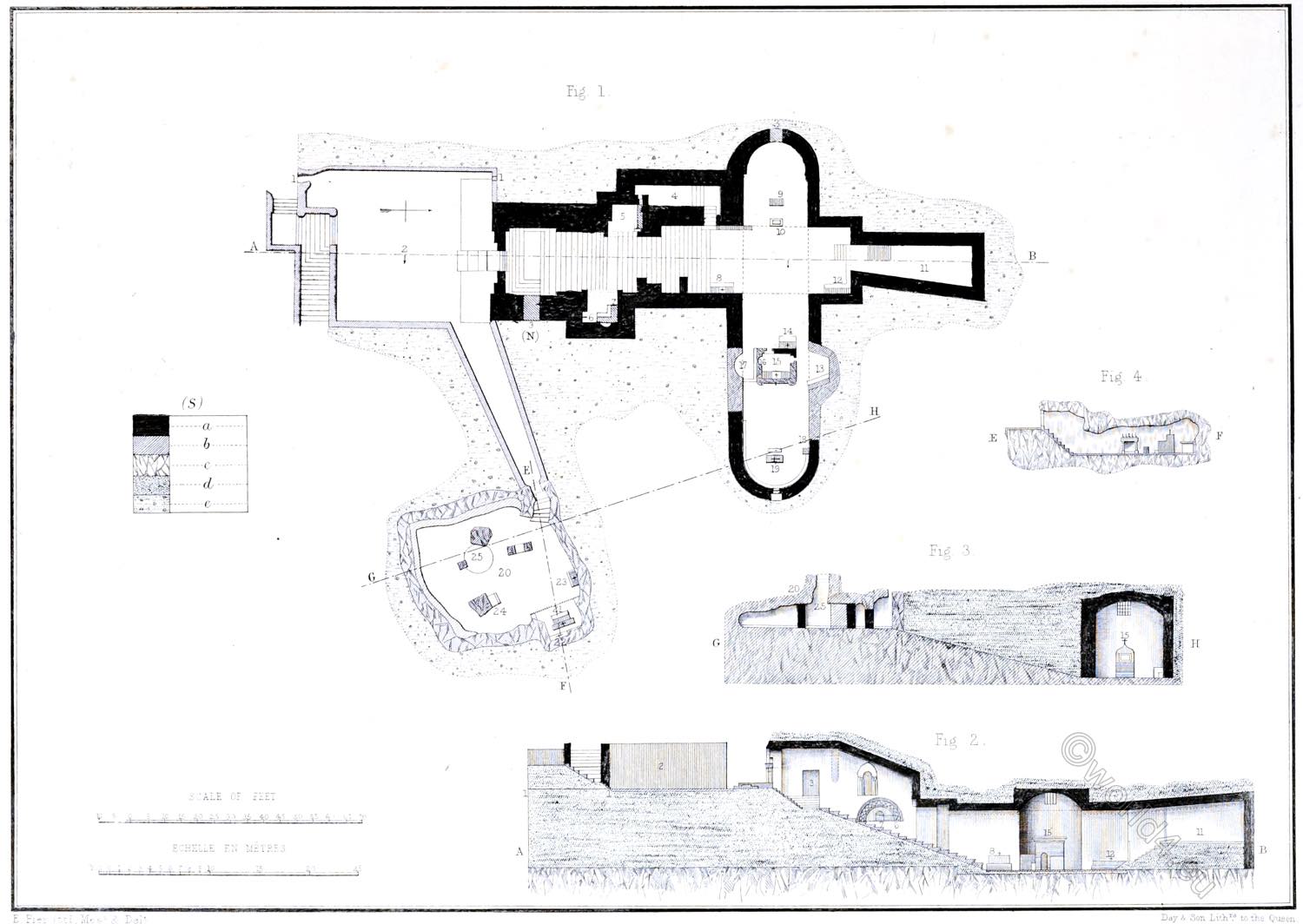
PLATE LI.
PLANS AND SECTIONS OF THE TOMB OF THE VIRGIN MARY, AND OF THE CAVE OF THE AGONY.
Fig. I. Plan of the Tomb of the Virgin Mary, and of the Cave of the Agony.
- Bridge over the Kidron.
- Vestibule of the Church.
- Closed Doors.
- Armenian Vestry.
- S. Joseph’s tomb.? (Armenian.)
- S. Ann’s Tomb.? (Greek.)
- S. S. Joachims Tomb. ? (Greek.)
- Greek Altar of S. Nicholas.
- Altar of the Copts.
- Cistern. (Armenian, Greek.)
- Greek Vestry.
- Greek Altar of S. Stephen.
- Syrian Altar.
- Armenian Altar.
- Tomb of the Virgin Mary. ?
- Place of Prayer for the Mohammedans.
- Place of Prayer for the Mohammedans.
- Greek Altar dedicated to the Virgin Mary.
- Greek Altar.
- Cave of the Agony.
- Latin Altar.
- Site of the Agony.
- Latin Altar
- Latin Altar.
- Opening in the Rock above.
Fig. 2. Longitudinal Section.
Fig. 3. Oblique Section.
Fig. 4. Section of the Cave of the Agony.
(S). Conventional Signs.
a. Ancient Walls.
b. Modern Walls.
c. Rock.
d. Place covered with Ruins and Earth.
e. Cultivated Land.
Source: Jerusalem Explored. Being a description of the ancient and modern city, with numerous illustrations consisting of views, ground plans, and sections by Ermete Pierotti; translated by Thomas George Bonney (Fellow of St Johns College, Cambridge). London: Bell and Daldy; Cambridge: Deighton, Bell and Co. 1864.
Continuing
Discover more from World4 Costume Culture History
Subscribe to get the latest posts sent to your email.


